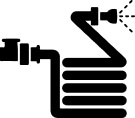BY JAMES MAY 2023
Maintaining massive construction machines is not easy. You have to choose only the best grade of components to keep the machines in good shape. Likewise, when you have a large fleet of machines like excavators, there is a need for high-grade seal kits. One of the proven methods is to make considerations during the purchase process. If you try to save money by compromising the quality at a low price, many challenges will await you. For instance, the seal kits you install in the heavy machine’s hydraulic cylinder must be the best. If they are not the best, there will be consequences. These consequences will make you procure only the best-quality cylinder kits. Here are the detailed reasons why quality matters. High Chances of Accurate Adaptability Adaptability is the most important factor when you go for large-scale industrial applications. Since hydraulic cylinder seal have to be installed precisely, high performance is expected by users. If they don’t get such performance, there is a lack of adaptability. People go for affordable hydraulic cylinder seal to maintain accuracy and adaptability. They can’t get such accuracy unless the kits they install are compatible with machines. When you choose parts that meet the requirements to complete the compatibility, you get the highest level of performance. Why Adaptability? Accuracy is very important; when you combine it with adaptability, you get efficient performance. These outcomes are the reasons why people go for large-scale industrial applications. They know that machines like excavators will perform well if their hydraulic cylinder seal kits work perfectly. Industrial users can not afford poor or mediocre performance by purchasing in large volumes. They need high adaptability to maintain accuracy in the applications. No excavator can maintain good performance with low compatibility of hydraulic cylinder seal. Consistent Performance All heavy machines need hydraulic cylinder seal kits of the same quality to give consistent performance. There will be no consistency if there is even a slight difference between their quality levels. Some excavators might perform great, and some might not. Quality differences will result in inconsistent performance, and no business wants that. If it is a construction company, one can not afford to face such problems. Why Consistency? Consistency is crucial because it makes the foundation of a brand. Your brand must bear the cost if your excavators or other heavy machines perform poorly. That cost could be caused by oil leakage, low pressure, and similar issues in the hydraulic cylinder. Since the hydraulic system relies on cylinder seal kits, you can expect a significant impact from these kits. Low Maintenance Because of High Quality The higher the quality of the hydraulic cylinder seal kits, the less maintenance they will need. That also means that higher quality will lead to more durability. Then, there will be less of a need for maintenance. It will reduce the cost of maintenance. If maintenance costs are less, the overall cost of operation will also be reduced. So, high-quality hydraulic cylinder kits will increase performance without bothering users for frequent maintenance. They can rely on the longevity of kits for low-maintenance usage. It will also not bother the excavator operators frequently. Why Does Maintenance Cost Matter? Maintenance costs matter because they affect the overall project cost. Saving money on low-quality seal kits will cause long-term problems. The cost of maintenance will not only increase but also frustrate the operators. If all the machines have the same low-quality kits, they will keep bothering users with back-to-back maintenance. Superior Resistance to Heat, Pressure, and Shocks Why do people go for high-quality seal kits for hydraulic cylinders? To get the best resistance level against heat, pressure, and shocks? Their primary purpose is fully supporting hydraulic cylinders by resisting heavy forces like heat, pressure, and shocks. Any ordinary quality can not deal with these challenges. This is why only the best quality has to come for the duty. The heat in the operation is extremely high, and the seal kit has to deal with it. Likewise, the pressure in a hydraulic process is extremely high, and you can expect how much strength a seal kit offers. Similarly, the shocks in the excavators are potent, and ordinary seal kits can’t deal with them. Users need only the superior resistance level from these kits. This is why the quality matters the most in this case. Prevention of Hydraulic Oil Leakage One main concern is hydraulic oil leakage. Users do not want that to happen at all costs. If it happens, there will be high friction and a drop in hydraulic cylinder performance. They can not perform well without the right support from seal kits. The leakage of hydraulic oil will make the cylinders messy during operations. Always remember that a high-quality kit will keep pressure on every joint to prevent leakage. All the Kits Give Top-Grade Performance Equally When you purchase hydraulic cylinder seal kits, you want the same performance from all. This helps you use your excavator fleet for construction projects without worries. You know that if one excavator performs well, the others will perform similarly. This top-grade performance comes only when you choose the best quality. Large-scale industrial applications can not rely on ordinary hydraulic cylinder kits. They must be the best to fulfill all the requirements in the harshest conditions. Conclusion These are the reasons why quality matters in large-scale applications. Heavy machines cannot be expected to give up at a crucial moment using low-quality seal kits. Their hydraulic cylinders must get full support from seal kits for the best performance.








 OUR PRODUCTS
OUR PRODUCTS 













